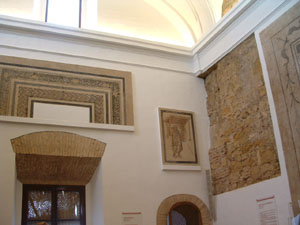
The Archaeological Museum of Seville was built between 1911 and 1919
in Neo-Renaissance style by Aníbal González. Inside are
examples of the many artistic styles that once flourished in Seville,
including Prehistoric, Roman, Arabic and Christian.
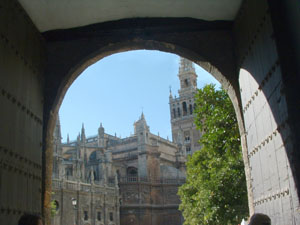
View through the gates to the city of Seville and the Cathedral.
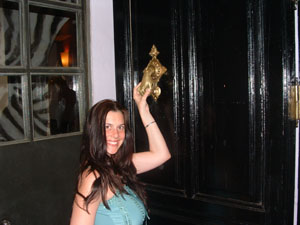
The door knockers are hands in some parts of Seville as well as Cordoba.
This dates back to the time when much of Spain had been conquered by the
Moors. According to one legend the hand represents the hand of Fatima,
Mohammed’s daughter. Another legend states that the hand is symbolic of
the Five Pillars of Islam.

The doors date back hundreds of years in this city to when people proved
how wealthy they were by how much brass they could place in their front
door. Many are high and studded, with leonine knockers or brass knockers
shaped as hands.
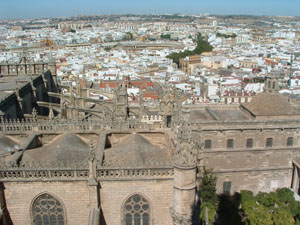
View from the Cathedral’s bell tower overlooking Seville.
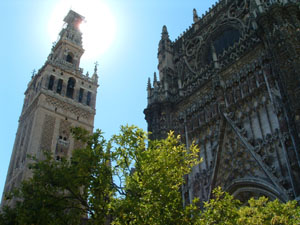
- The Cathedral rises from the Patio of Oranges. Construction on it began
in 1402 and wasn’t finished for nearly hundred years.
|
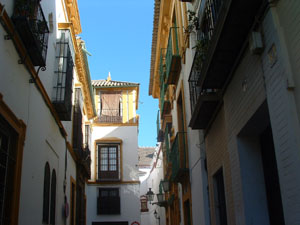
The quaint streets of Seville really called to me. I especially like
the decorative windows, some of which dated back to the 1800s when women
would sit inside and watch the world passing by below them.
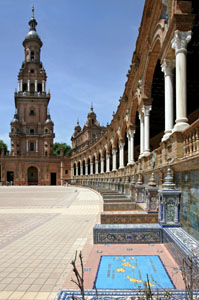
The beautiful and ancient Plaza de Espana in Seville. Many of the buildings
on this plaza were built for the 1929 Spanish-American Exhibition.
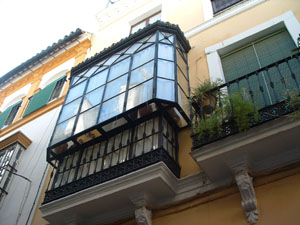
Apartment window in the city.
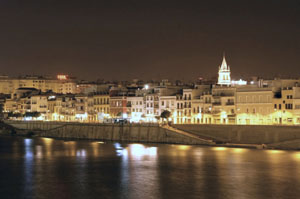
Seville at night is a glittering city, and certainly my favorite city
in Spain. It was the last city my father and I toured before he suddenly
passed away.
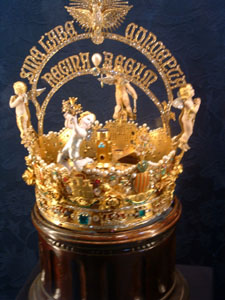
The largest pearl in the world is fitted on this crown. It was shaped
into the torso of an angel (left)
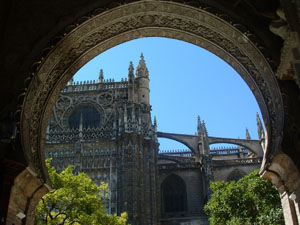
The architecture of Seville is without parallel. This is the Gate to
the Patio de los Naranjos, part of the old Almohad mosque, now part of
the Cathedral.
|













